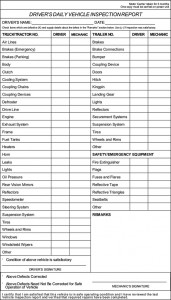In July of 2013, the Houston Chronicle reported that 12 people had died in Eagle Ford Shale area traffic accidents, an increase of 12 times the number of fatalities reported to the Texas Department of Transportation. This past spring, the San Antonio Express reported that Texas Department of Transportation data showed a 40 percent increase in fatal traffic accidents in the Eagle Ford Shale region last year.
There’s no question that the shale play roads are busy and congested. This makes it more important than ever for drivers to know how to share the road. While the biggest jump in fatal traffic accidents has involved commercial vehicles, recent data shows that the majority of fatalities from collisions involving large commercial trucks are not the result of the truck driver’s actions but of the other driver’s actions. Sharing the road with large commercial vehicles means all drivers must always be aware of their surroundings.
The National Safety Council has a definition for a Preventable Accident. The NSC states further the expectations of professional drivers, that “every accident in which a driver is involved shall be considered preventable unless there was no action, which the driver could have reasonably taken to avoid the accident and that, his actions in no way contributed to the occurrence of the accident. The driver must drive in such a way that he commits no errors himself and so controls his vehicle to make due allowance for the condition of the road, the weather or the traffic, and so that mistakes of other drivers do not involve him in any accident.”
Road-Sharing Tips
[ic-r]Share the road and be safe by giving yourself plenty of room to maneuver. You need plenty of time, too, so maintain a safe speed. Here are some common sources of trouble and how to avoid them whether you’re behind the wheel of a large or small vehicle, courtesy of Del Mar College Transportation Training and Shell:
Blind Spots - Avoid tailgating a large vehicle. Remember, if you can’t see the driver’s face in the side view mirror, the driver can’t see you.
Cut-offs - Don’t try to sneak into a small gap in traffic ahead of a truck. Trucks take as much as three times the distance to stop as the average car.
Rolling back - Leave plenty of room if you are stopped behind a large vehicle. When the driver releases the brakes after being stopped, the vehicle may roll back.
Buckle your belts - Always buckle your seat belt. If you get into an accident with a large vehicle such as a truck, seat belts are your best protection. Trucks require a greater stopping distance and can seriously hurt you if your car is struck from behind.
Aggressive drivers - Aggressive drivers can be dangerous drivers. Pulling in front of trucks too quickly when passing and making frequent lane changes, especially in the blind spots of trucks can create dangerous and potentially fatal situations.
Wide turns - If a large vehicle in front of you is making a right turn, do not move up into the space that opens up in the right lane. You are putting yourself into a very dangerous position.
Turbulence - Due to various factors such as air pressure and airflow, a large vehicle can create heavy air turbulence. This may affect your ability to control your vehicle when passing a large vehicle.
Avoid distractions - Keep your cell phone and other electronic devices out of reach and silence them while driving.
Keep your eyes moving - You should be checking your mirrors, gauges and surroundings every 3 to 5 seconds.
Look Ahead - Be sure to look 5 to 10 seconds ahead of you to anticipate potential hazards.
Staying safe while driving in the Eagle Ford Shale play calls for planning, patience and attention. Aim to give yourself plenty of time to get to your destination so you’re not tempted to speed or chance risky maneuvers. Look out for other drivers, and yourself.



